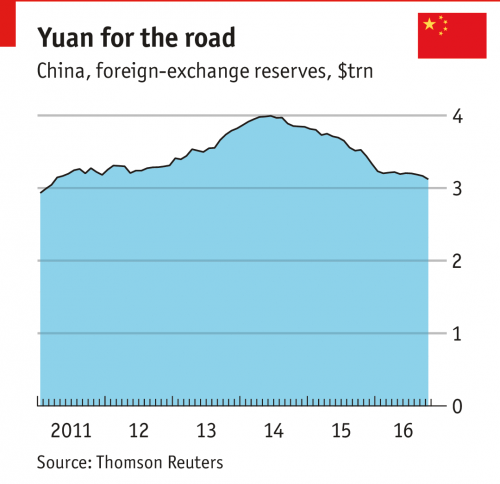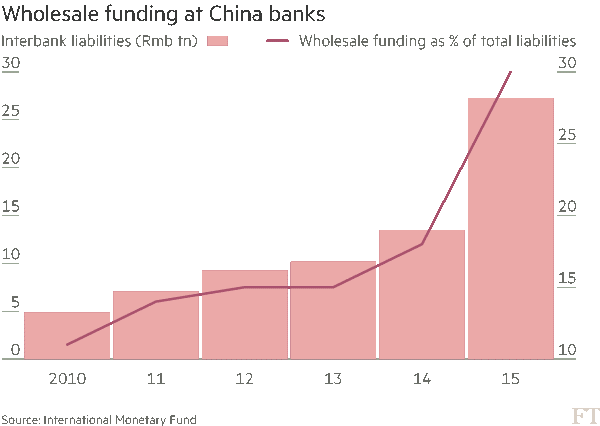There is rhetoric, and then there is reality. There are expectations, and then there is reality. There is a death valley but also the valley of peace. There are fears, but also hopes. There are thorns but also roses among them. There are opposing winds that could raise our kites higher. There is a time for everything from war to peace and from mourning to joy. In this commentary we choose to review some thorny issues from China, the EU, and the US, and discuss their implications for the investment landscape.
Let’s start with the EU and the recent Italian referendum. In our humble opinion the markets seem to have taken lightly the outcome of that referendum. The Italian government may end up rescuing Banca Monte dei Paschi (the oldest EU bank and the third largest in Italy, for which we have commented before), which in turn may create a messy situation for the EU financial institutions. In a nutshell here is what might happen: The government bails it out which will imply that EU rules have to be applied. Those rules necessitate haircuts (bondholder haircuts, and conversion of deposit into equity, unless the Eurocrats break their own rules one more time, which will diminish their credibility and make the EU structure even more shaky).
The problem with the above bailout is threefold: First, the largest bank in Italy (Unicredit) will be affected and will require capital infusion. Once Unicredit’s capital adequacy is questioned, the whole mountain of non-performing loans (NPLs) in Italy (which conservatively speaking is over $330 billion) will become shaky. Once the Italian NPL mountain starts shaking, the counterparty risks in the whole EU financial structure will destabilize it even more. Second, financial instability in the EU will create a crater where political legitimacy and the EU identity will be questioned. Third, if the problems cannot be contained and the risks spread, then the EU jeopardizes its structure and the unraveling of it may start.
Let’s now move on to China and the latest news we received from there. As the following graph shows, Chinese capital flight continues. The result is that foreign exchange reserves have dropped by over 20% from their highs, and the Chinese government is imposing new capital control measures. Of course, such controls are an oxymoron for a country that wishes its currency to be considered a reserve currency around the world, especially when it has committed to allowing it to be shaped by market forces. However, the fact is that China still represents a Great Wall of Steroids with many bubbles that transmit from sector to sector in an authoritarian effort to prevent their bursting. Of course, bubbles always burst and the longer it takes the messier the situation will be for China and the whole word.
Continuing on the China discussion, we cannot neglect the fact that wholesale borrowing among Chinese banks is skyrocketing (see graph below) which reminds us of the Lehman story. Banks cannot sustain their operations and their balance sheets by borrowing in a volatile wholesale market. Chinese banks’ asset quality has been deteriorating, defaults are rising, and the liabilities on their balance sheets are huge.
We may revert in the future regarding the Chinese concerns and their path toward Japanification (characterized by dismal growth, always in historical perspective). However, before we move on to the US it is worth noting that the rush to shed assets away from emerging markets seem to be on a scale not seen for a few years now. As reported by the IIF (Institute of International Finance) the trajectory of a reflated economy in the US along with the projections for higher rates, a stronger dollar, anti-globalization rhetoric and the endemic emerging markets problems, have led to an outflow of capital toward developed markets, and especially the US.
Moving now to the US scenery and looking from a long-term perspective (which however could affect medium term prospects especially when considered seriously and discounted properly), we would say that a path of addressing the unfunded and non-discretionary liabilities of Medicare is a must. If not addressed properly, then by 2035 the US debt will exceed $45 trillion (excluding any increases in government spending), and the interest on the debt will be over $1 trillion at low interest rates (which may not exist 5-6 years from now). Such a challenge requires a recipe that involves Medicare redress as well as a growth path. Lower corporate rates and measures that increase productivity are right ingredients. The counter-party exposure of US banks to the EU banks and the trembles coming in from China will reverberate in the US too, which will make the enterprise of the locomotive more challenging in an era that truth is manufactured in a post-literate world.
Let’s close with how all of the above shape up the investment landscape a.k.a. seeking roses among the thorns. About a month ago and following Trump’s victory, we outlined the sectors that could benefit from the election results. In addition, here are three areas which we consider as potential candidates for gains as the incoming administration’s policies unfold:
– Repatriation of corporate profits could uplift companies with significant overseas cash
– Higher incomes and higher net worth may advance the stakes of consumer discretionary spending and transportation oriented companies
– Real hard assets should be considered as a hedge regarding unpredictable policies, while at the same time and from a long term perspective they represent the only real money


